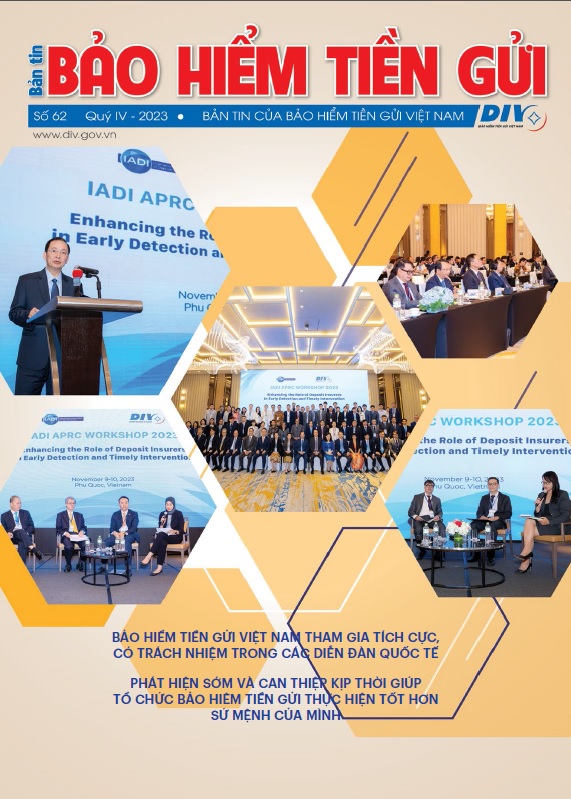Speaking at the opening of the discussion, the Deputy Governor said that practice in many countries has demonstrated the contribution of microfinance to hunger eradication, poverty reduction and promoting financial inclusion. In Vietnam, the Vietnam Banking Industry Development Strategy to 2025, with orientation to 2030 issued under Decision No. 986/QD-TTg dated August 8, 2018 of the Prime Minister sets the task:" To continue to have mechanisms and encourage and support microfinance institutions to develop, increase the number of microfinance institutions to increase access to customer services, and support the implementation of the National financial inclusion strategy".
The national financial inclusion strategy to 2025, with orientation to 2030 also sets the goal: "Develop a system of microfinance organizations, programs, and projects that operate safely, effectively, and sustainably, aiming to serve the poor, low-income people, women and micro-enterprises with diverse, flexible and appropriate financial products and services, contributing to implementing the policy to ensure social security and sustainable poverty reduction.”
According to the Deputy Governor, to realize this goal, the Strategy sets out many tasks and solutions. encourage, encourage the development of models linking the activities of commercial banks with microfinance organizations, programs and projects. Encourage cooperation between microfinance organizations, programs, projects and financial technology organizations. Support microfinance organizations, programs and projects in accessing preferential capital sources. At the same time, strengthen socialization of support and participation in contributing financial resources in providing microfinance products and services.
The Deputy Governor assessed that while implementing the above tasks and solutions, the microfinance sector has made remarkable developments. Currently, there are 4 microfinance institutions and 79 microfinance programs and projects that have been granted registration licenses by the State Bank of Vietnam. The number of customers of 4 microfinance institutions reached 500,000 customers; Total assets, charter capital, and equity of these four organizations reached 10,380 billion VND, 1,060 billion VND and 2,444 billion VND, respectively.
However, the scale of operations of microfinance organizations, programs and projects is still quite small, not commensurate with the development potential and is facing some difficulties. exciting, capital growth is still limited because all social resources have not been encouraged to participate in microfinance activities. Some regulations are not consistent with reality, causing difficulties in the operation process such as: No unified regulations on microfinance customers; Regulations on owners and founding members are still quite strict; Regulations on loan procedures, credit approval, and inspection of loan use must be applied like commercial banks...
At the seminar, experts, scientists, and managers went in-depth and focused on discussing and fully and comprehensively evaluating the operational practices of a number of financial organizations, programs, and projects as as well as the current status of financial access of microfinance customers, and at the same time review and analyze the legal corridor.
According to experts, for microfinance to promote its role as a pillar of promoting financial inclusion in Vietnam, it is necessary to:
Firstly, continue to review and improve the legal framework on the organization and operations of microfinance institutions. In particular, it is necessary to focus on a number of contents such as unifying regulations on microfinance customers in accordance with the provisions of the Law on Credit Institutions 2024; Amending the regulations on capital contributing members so that it is not required to have a political, socio-political organization...; Strengthening State management of microfinance activities, especially diving programs and projects in provinces and cities today, with the role of management, inspection and supervision, assessments of local agencies at all levels and functional ministries, including the State Bank of Vietnam, the Ministry of Finance and other ministries.
Secondly, constantly improve the operating capacity of microfinance institutions, microfinance programs and projects such as: Increasing capital from equity, domestic investors and bonds/mobilize capital from foreign investors; improve risk management capacity; Invest in applying technology to operational processes to improve efficiency, shorten time, reduce costs...
Thirdly, microfinance institutions need to increase the application of technology in product development and diversification; simplify procedures, promote cooperation with commercial banks and financial technology organizations to enhance technology application (such as eKYC, SMS banking, Home banking, Mobile banking...) to create more convenience for customers. .
Fourthly, it is necessary to strengthen educational and communication activities on financial knowledge for customers and people to help them manage and use financial resources effectively, contributing to improving income and achieving their sustainable finance. Continue to encourage the development of models linking the activities of commercial banks with microfinance organizations, programs and projects through the provision of credit capital.
Appreciating the opinions of delegates and experts at the discussion, Deputy Governor Dao Minh Tu said: "This is an opportunity for management agencies to listen to exchange opinions and propose policy from experts, organizations , programs and microfinance projects to continue to create conditions for the development of this activity in the coming time."
Communication Department

























